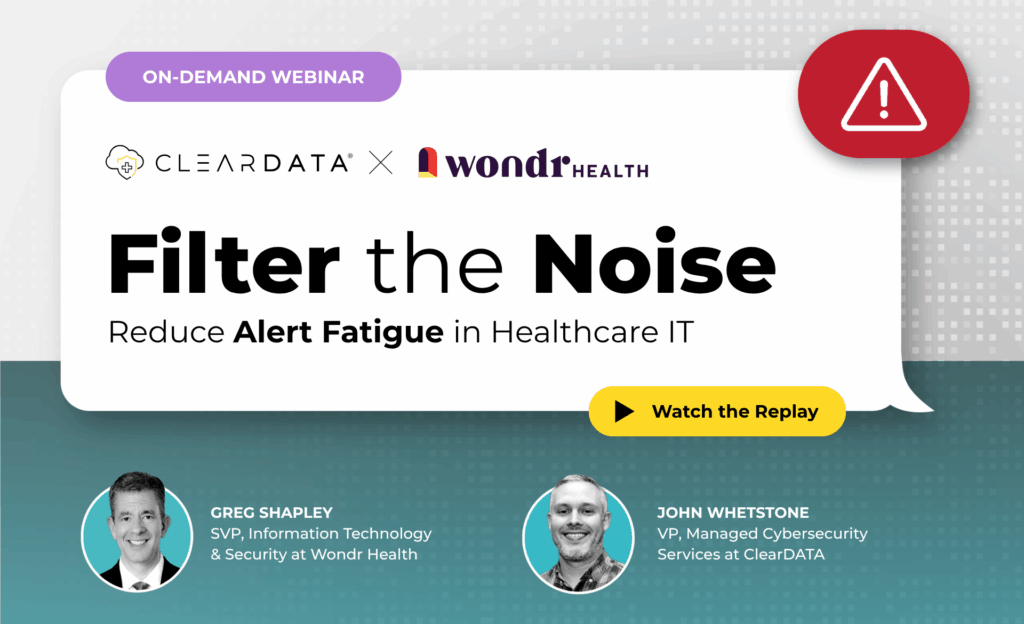For healthcare organizations looking to reduce long-term costs or capitalize on internal IT capabilities, in-house healthcare cloud management can be an attractive strategy. By managing your own cloud infrastructure, your team can tailor resources to fit clinical and operational needs, gain real-time visibility into system performance, and maintain hands-on control of sensitive data environments.
The High-Stakes Reality of DIY Healthcare Cloud Management
Managing healthcare data—especially protected health information (PHI)—in the cloud is no small task. The stakes are high, and with them come complex regulatory requirements. From HIPAA compliance to industry-specific cybersecurity standards, any misstep can result in data breaches, hefty fines, and damage patient trust.
Organizations choosing a DIY healthcare cloud strategy must be prepared for the full life cycle of responsibilities: cloud infrastructure design, continuous security monitoring, automated remediation, compliance audits, and incident response planning.
To help you get started, we’ve outlined the essential steps to build a secure and compliant in-house cloud environment tailored for healthcare.
Bottom line: You can run a secure, compliant DIY stack, but the margin for error is razor-thin.can you
Your Step by Step Guide to DIY Healthcare Cloud Management Evaluation
Step 1: Assess Your Organization’s Cloud Readiness
Before embarking on a DIY healthcare cloud initiative, evaluate your organization’s current capabilities:
- Technical Expertise: Do you have personnel with cloud computing and cybersecurity expertise?
- Infrastructure: Are your systems compatible with cloud technologies? If migrating from legacy systems, factor in the complexities of integration.
- Compliance Knowledge: Does your team understand regulations like HIPAA or GDPR that govern healthcare data.
Performing a readiness audit ensures you identify any gaps that could hinder a successful implementation.
Step 2: Build a Secure Foundation
Security should be the bedrock of your healthcare cloud management strategy. Follow these best practices to protect sensitive data:
- Data Encryption: Encrypt data both in transit and at rest to prevent unauthorized access.
- Multi-Factor Authentication (MFA): Require MFA for all systems to add an extra layer of security.
- Access Control: Implement role-based access control (RBAC) to limit user access to only the data and systems they need.
Review and update your security protocols regularly to address emerging threats.
Step 3: Choose the Right Cloud Infrastructure
Selecting an appropriate cloud infrastructure is critical. You’ll need to decide between:
- Public Cloud: Cost-effective and scalable but less control over infrastructure.
- Private Cloud: Offers greater security and data control but requires higher upfront investment.
- Hybrid Cloud: A mix of public and private cloud solutions for balance in cost and control.
- Multi-Cloud: Utilizes multiple cloud providers to avoid vendor lock-in, improve reliability, and optimize performance across different platforms.
Match your choice to your organization’s data sensitivity, regulatory requirements, and available resources.
Step 4: Implement Robust Monitoring Tools
Effective cloud management relies on real-time monitoring for performance and security. Key tools to consider include:
- Intrusion Detection and Prevention Systems (IDPS) for identifying and mitigating threats.
- Cloud Monitoring Platforms to track resource usage, optimize systems, and predict potential concerns.
- Automated Alerts that notify your IT team immediately of unusual activity.
Monitoring keeps your system running smoothly and ensures compliance with regulatory standards.
Step 5: Stay Compliant with Regulations
Healthcare organizations are required to adhere to several laws and frameworks, most notably:
- HIPAA (Health Insurance Portability and Accountability Act)
- HITECH (Health Information Technology for Economic and Clinical Health Act)
- GDPR (General Data Protection Regulation, if applicable)
- GxP (Good [x] practice)
Ensure compliance by conducting regular audits, documenting all processes, and keeping up-to-date with regulatory changes. Failure to comply can result in significant financial penalties and reputational harm.
Step 6: Protect Against Data Breaches
To safeguard your cloud system from breaches, take proactive measures to shield sensitive healthcare data and maintain trust like:
- Conduct Vulnerability Assessments regularly to identify risks.
- Apply Patches for software vulnerabilities as soon as they are released.
- Utilize Endpoint Protection Tools to secure devices accessing your cloud environment.
Step 7: Plan for Disaster Recovery
A comprehensive disaster recovery plan is essential to minimize downtime and data loss in emergencies. By planning for the worst, healthcare organizations can sensitive data, reduce operational downtime costs, and ensure continuity of care. At a minimum, your plan should include:
- Encrypted, Off-Site Data Backups: Ensure that PHI and other sensitive data are continuously backed up to secure, geographically redundant storage. Cloud-native backups should be encrypted in transit and at rest to meet compliance requirements.
- Clearly Defined RTOs and RPOs: Establish Recovery Time Objectives (RTOs) and Recovery Point Objectives (RPOs) based on clinical and operational priorities. This ensures that critical healthcare systems, such as EHRs and lab systems, are restored quickly with minimal data loss.
- Routine Disaster Recovery Simulations: Conduct regular tabletop exercises and live failover tests to validate recovery workflows. These drills help identify gaps in your incident response and ensure your team is prepared to act under pressure.
- Isolated Recovery Environments (IREs): Use cloud-based IREs to restore mission-critical systems in a secure, sandboxed environment. This minimizes the risk of reinfection from malware or ransomware during the recovery phase.
- Cloud-Native Automation & Playbooks: Incorporate automated runbooks for initiating disaster recovery workflows, enabling rapid and repeatable response to various threat scenarios.
- Third-Party Risk Assessment: Evaluate your cloud providers and managed services partners to ensure they align with your recovery SLAs and healthcare compliance mandates.
- Compliance-Ready Documentation: Maintain thorough documentation of your recovery policies, procedures, and test results. This supports audit readiness and reinforces your commitment to cloud security and HIPAA disaster recovery compliance.
Step 8: Reevaluate Regularly
DIY healthcare cloud management isn’t a set-and-forget undertaking. Technology and regulations continuously change, requiring CISO’s and Healthcare Cybersecurity Professionals to regularly evaluate their healthcare cloud management capabilities.
On an ongoing basis, your team should:
- Review Performance Metrics to ensure systems meet clinical and operational needs.
- Update Security Protocols to reflect current threats.
- Staff Training to educate employees about new tools and security practices.
- Compliance Regulations: Review changing healthcare and relevant industry regulations to ensure continuous compliance.
Regular re-evaluation ensures your cloud management strategy remains effective and compliant.
Comparison: MSSP vs. DIY Healthcare Cloud Management
| Factor | DIY Approach | Outsourcing to MSSP |
| Cost | Lower upfront spend, but unpredictable long-term expenses and hidden costs (staffing, training, breach recovery) | Fixed, predictable monthly/annual fees; often more cost-effective at scale |
| Expertise | Relies on internal team’s experience, which may be limited or stretched | Access to specialized security professionals with up-to-date certifications and industry knowledge |
| Scalability | Can be difficult as requirements grow; dependent on in-house capacity | Rapid scalability and flexible solutions tailored to current and future needs |
| Risk Management | Higher risk of gaps or oversights due to limited resources and evolving threats | Proactive threat monitoring, incident response, and compliance management around the clock |
| Compliance | Requires constant vigilance and self-auditing; higher risk of noncompliance | MSSPs bring proven frameworks and can streamline audits, reducing regulatory risk |
Drive Innovation Securely in the Cloud with ClearDATA
For healthcare providers weighing the benefits of a DIY approach, it’s important to balance the desire for control with the unique complexities of cloud management. If at any point the responsibility becomes overwhelming, consult a healthcare cloud security expert.
Professional guidance can help you evaluate whether to manage your healthcare cloud in-house or partner with an expert. An experienced partner ensures your system is secure, compliant, and customized to your needs.
ClearDATA is your trusted cloud security, compliance, and operations partner that helps HealthTech, Payers, Providers, and MedTech companies accelerate go-to-market and scale with confidence.
Don’t leave anything to chance—take the next step toward securing your patient data by reaching out to an expert today.
Speak with an Expert
FAQ
How can I ensure HIPAA compliance in DIY cloud management?
Implement robust security measures such as encrypting data in both transit and at rest, using multi-factor authentication (MFA), and restricting access to authorized personnel only through role-based access control (RBAC). Regularly audit your cloud environment to identify vulnerabilities, and document all compliance-related processes carefully. Stay updated on the latest regulations to adapt your security policies accordingly.
What are the best practices for securing healthcare data in the cloud?
- Encrypt all data to prevent unauthorized access.
- Deploy intrusion detection and prevention systems (IDPS).
- Use automated monitoring tools to detect unusual activity.
- Set up firewalls and endpoint protection for devices accessing your cloud.
- Regularly update security protocols and patch vulnerabilities.
Is DIY healthcare cloud management cost-effective?
DIY cloud management can be cost-effective if your organization has in-house expertise and technical resources. However, it may lead to higher costs if errors, compliance issues, or data breaches occur due to a lack of specialized knowledge. Evaluating the total cost and potential risks is essential before proceeding.
What is the difference between public, private, and hybrid cloud infrastructure for healthcare?
- Public Cloud: Offers scalability and affordability but provides limited control over data.
- Private Cloud: Delivers enhanced security and control but demands higher investment and resources.
- Hybrid Cloud: Combines public and private cloud benefits, offering both cost efficiency and better control while managing sensitive data.
Can small healthcare providers manage their own cloud systems effectively?
Small providers can manage their cloud systems with the right technical expertise, scalable infrastructure, and robust security measures in place. However, outsourcing to a Managed Security Service Provider (MSSP) may be a better option if internal resources or expertise are limited.
ClearDATA is your trusted healthcare cloud security, compliance, and operations partner.



